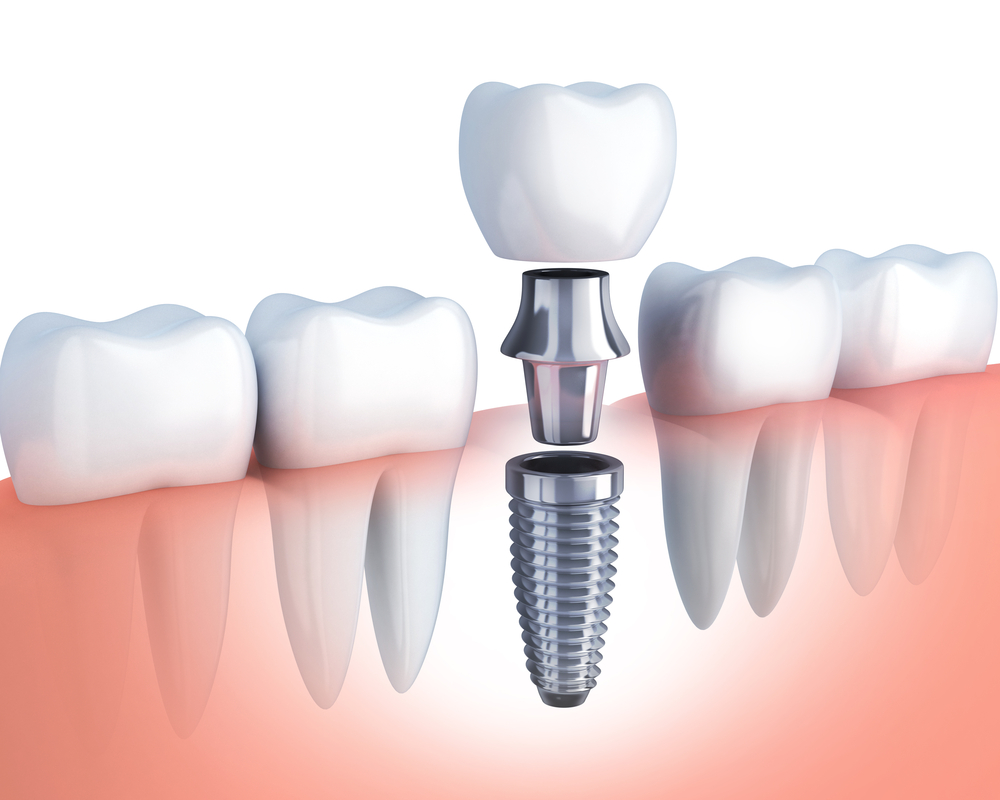Are you getting or considering getting dental implants? This step-by-step dental implant process will help guide you and answer any questions you may have. You may think the process entails a patient walking into a room with a missing tooth and leaving with a perfect smile, but it is not this quick. While implants do help fill in missing teeth, it can take several months to complete. The entire procedure requires outpatient care and involves a couple of different phases.
Thankfully each step is manageable as you will be under anesthesia during the procedure, and afterward, you may experience some swelling and discomfort around the jaw. In this article, we’ll go over the implant process from start to finish.
Timeline from Beginning to End
Consultation
The dental implant process begins with an initial consultation with your implant dentist. They will examine your teeth, take an X-ray, and make impressions of your teeth. The most crucial piece of information needed is a CT scan. Your bone is the primary determinant of whether or not you are a candidate for an implant. We can refer you to a specialist office where a CT scan is done at a discounted fee of $50. After completing your CT scan, we ask that you bring the USB or CD of the scan so that Dr. Carmichael can assess it and determine if there is enough bone density and width to support an implant.
Bone Graft
This next step is a crucial step for everyone who loses a tooth or gets a tooth pulled out. It is necessary, because when the tooth is pulled out the jaw doesn’t have sufficient bone to support the implants. Bone grafting is a step that strengthens the jawbone and creates a solid base for the implant. There are many types of bone grafts, including cow, pig, human, and even shark bone! The human donor bone graft (called an allograft) has the most success topped only with using your native bone (called an autograft). Depending on the physical structure of the patient, the recovery time for this step varies. It can range from a couple of weeks to 12 months for the bone to heal and integrate properly.

Titanium Implants
Once your mouth heals from the bone graft, your dentist will insert a titanium dental implant into your jaw. For the best results, the dentist will screw the implant into the bone. This takes 1-2 hours and will be pain-free as you will be under anesthesia the whole time. The titanium will fuse with your jawbone making it so your implant won’t slip or cause bone damage. It also will not decay the way your own teeth can if you had regular bridgework. If the implant is in the lower jaw, the healing process can take up to 5 months, and the upper jaw can take up to 7 months. Afterward, the doctor will place a healing collar that will guide the gum to heal away from the implant. This collar stays on for 10-14 days.
Abutment
When your mouth has healed completely, your dentist will then add the abutment on top of the implant. Once the abutment has healed, they will start making the mold of your teeth and jaw. You will receive a temporary crown that is worn for 4-6 weeks while they complete your permanent one.
Final Step
Smile, you’re on the last step! Once your artificial tooth is finished, the doctor will add it on top of the abutment. The permanent crown can be either screwed or cemented on the abutment.
As mentioned earlier, getting dental implants is not a one-day event. The process may take a couple of months due to the time it takes the mouth to heal after each step. The timeline also depends on whether or not you need a bone graft. If you’re ready to transform your smile, schedule an appointment with Dr. Carmichael today to learn the necessary steps to get your dental implants!




